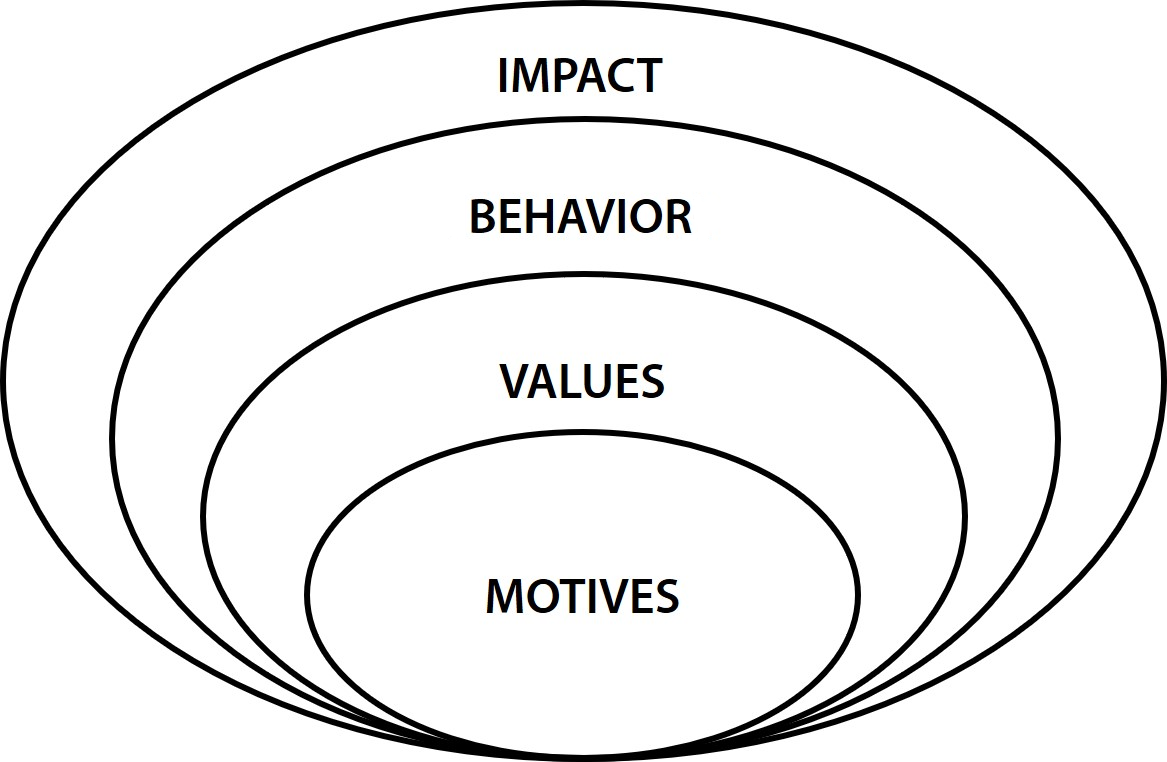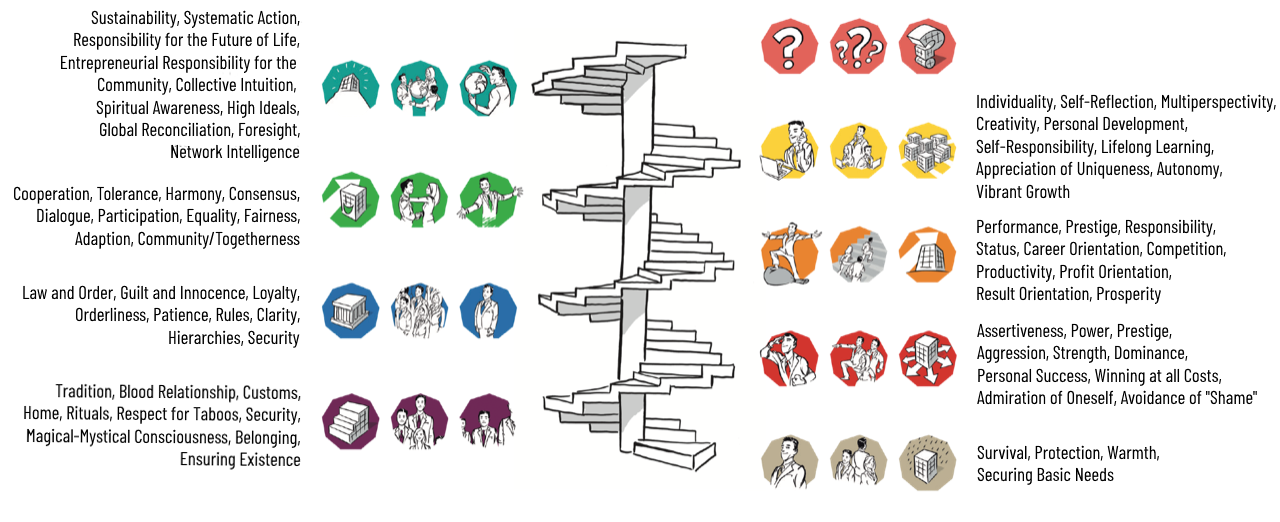
9 Levels of Value Systems®
What's Behind it?
Imagine human personality as a sliced-open onion with multiple layers:
- The outermost layer is the impact we have on other people.
- Beneath that is the layer of our behavior.
- Delving even deeper exposes our fundamental values.
- At the very 'core' of our personality, we find our motives.

While many diagnostic procedures have been established for impact, behavior, and motives, the importance of values and culture has recently gained more attention. Traditional concepts (often focusing on 'hard' factors like metrics) no longer yield the desired results. Buzzwords like digitization, New Work, transformation, agility, self-organization, and more signify a new world where new 'soft' solutions are needed.
The 9 Levels of Value Systems® offer such a solution because:
We make values measurable!
What are the 9 Levels of Value Systems®?
The 9 Levels of Value Systems® are scientifically based analysis tools that make values visible and usable. In other words, the 9 Levels ensure a perfect fit: individuals seamlessly with their teams, teams fitting into the organization, and the organization aligning with the market. We prioritize values and culture at the core of our approach, all based on the Integral Development Model by Prof. Clare W. Graves.

According to the complex model by Graves (also known as 'Spiral Dynamics') individuals, groups, and organizations undergo consistent and sequential developmental stages, each characterized by specific value systems. In the 9 Levels model, we represent this dynamic with a spiral staircase.
Using our scientifically validated questionnaires, we unveil the value systems of individuals, groups, and entire organizations. These tools can examine both the 'current' and 'target' states of a value system. Furthermore, they help illustrate any potential resistance to particular values.
- The Personal Value System (PVS) analyzes an individual's value system, focusing on a particular aspect of their life.
- The Group Value System (GVS) focuses on a specific team: What does the value system of a department or project group look like?
- The Organization Value System (OVS) analyzes the value system of an organization: What values do the participating individuals perceive in the organization? Are there consistencies and discrepancies, for example, between individual departments, locations, and hierarchical levels?
Why Work with Values?
Values are constant companions in every aspect of our lives. They shape our judgments of what is good or bad, guide our acceptance or rejection of things, and influence our behaviors. Fulfilled values grant the feeling of happinesss, If not, discontent tends to grow. Values both influence and fuel our abilities.
Understanding our own value system is invaluable, especially for those working with people, teams, and organizations. When team members share aligned values, departments tend to function 'smoothly'. If not, conflicts may arise frequently, often leaving the involved parties unable to pinpoint the exact cause.
This is precisely where the 9 Levels of Value Systems® play a crucial role. By bringing clarity to the abstract concept of 'values,' they offer a fresh perspective on development, providing a clear direction for change.
Pragmatic – positive – fitting!